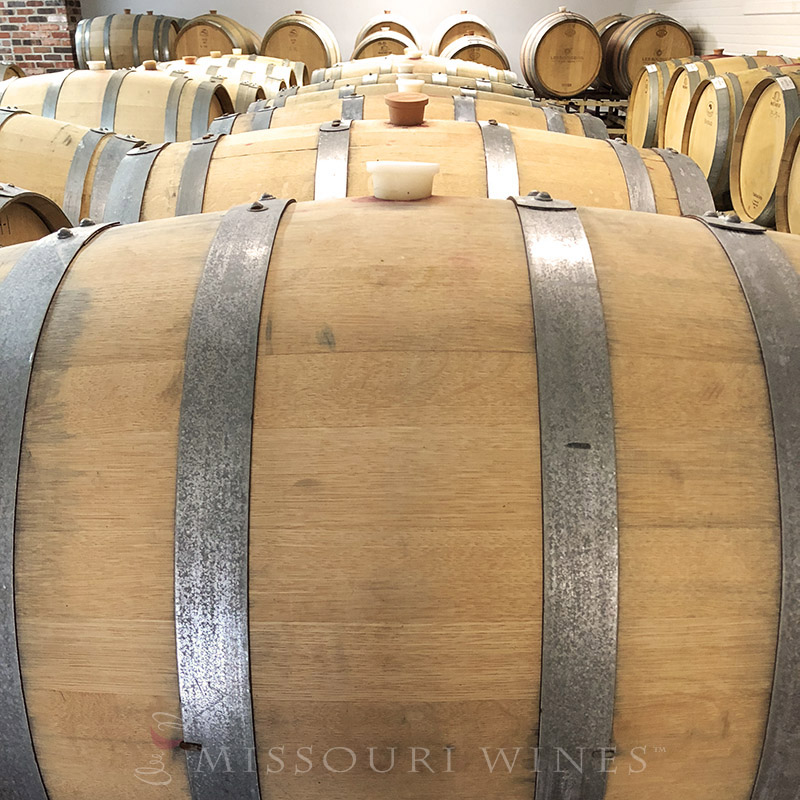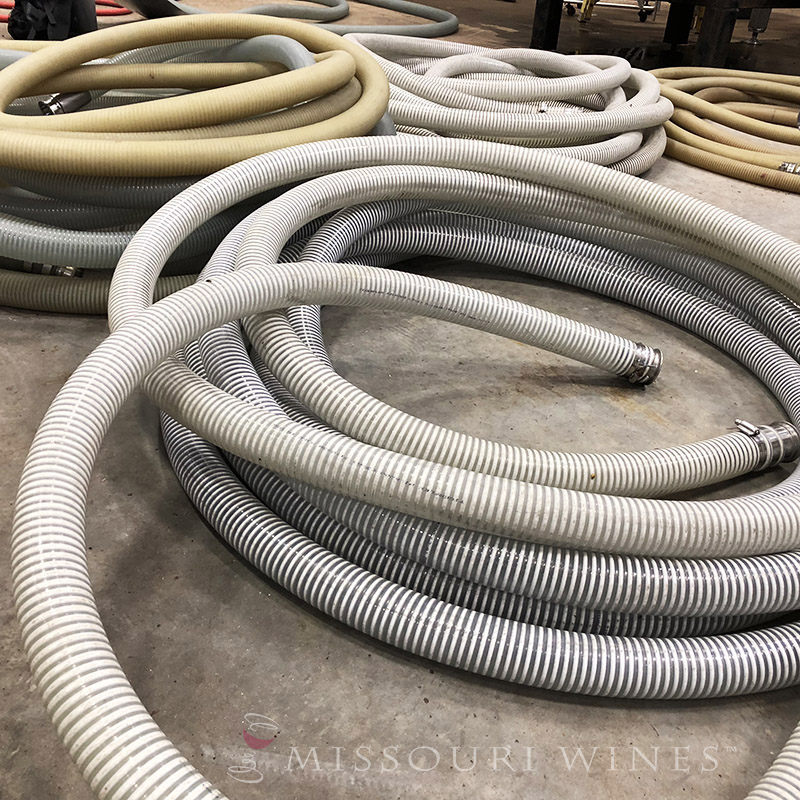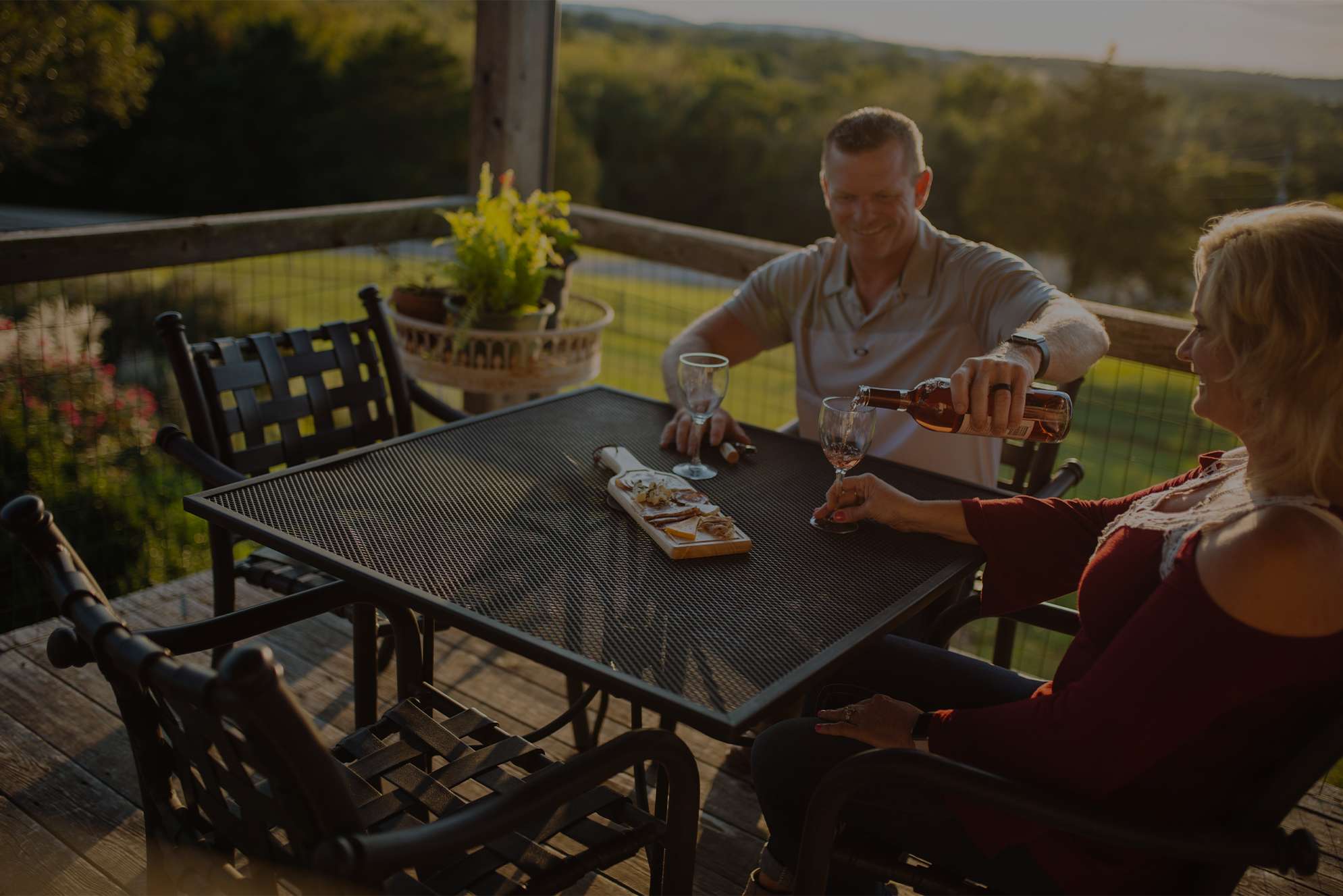December 21, 2017
 Harvest is arguably the most visible time of the year for grape-growing and winemaking, but the work doesn’t stop after the excitement of crush is complete. Important aspects of winemaking go on during the cold winter months as well. Here are some of the things happening behind the scenes in Missouri wine country according to local winemakers. Whether it’s filtering, stabilizing, oak aging or looking for ways to continually improve, making great wine takes a lot of time and dedication. Luckily for us, Missouri winemakers know that some things are worth the work!
Harvest is arguably the most visible time of the year for grape-growing and winemaking, but the work doesn’t stop after the excitement of crush is complete. Important aspects of winemaking go on during the cold winter months as well. Here are some of the things happening behind the scenes in Missouri wine country according to local winemakers. Whether it’s filtering, stabilizing, oak aging or looking for ways to continually improve, making great wine takes a lot of time and dedication. Luckily for us, Missouri winemakers know that some things are worth the work!
Brandon Dixon – Noboleis Vineyards in Augusta
“The winter is actually a very busy time for us. It is the time when we are taking our newly fermented wines and getting them ready for bottling. For the majority of our wines, that means stabilizing the proteins and tartaric acid in the wines. We do this purely for cosmetic reasons. If a wine has excess protein, the proteins can denature and come out of solution at warmer temperatures. This can cause the wine to look cloudy. Conversely, if the wine experiences cold temperatures, the tartaric acid salts can crystallize and come out of solution. If you've ever noticed small, sand-like crystals in the bottom of your bottle, or stuck to the side of the bottle, you've experienced tartaric acid crystals. Neither one of these things would affect the wine's aroma or flavor, but customers don't like to see anything but brilliantly clear wine in their bottle. Once the wines are stable, we filter them to prepare them for bottling.
We are also pumping some of our wines into oak barrels at this time. Some of our wines benefit from slow, controlled oxidation that the barrels provide. We also gain additional layers of aromas and flavors from the caramelized sugars in the wood that are produced when the barrel staves are toasted at the cooperage. The amount of oxidation and barrel flavors we want will determine how long we leave the wine in the barrel. The average time frame for barrel aging at Noboleis is 4-18 months; although we do have some wines resting in barrels that we expect will be in there for 7 years or more!”
Chris West – Cave Hollow West Winery in Hannibal and West Winery in Macon
“[Throughout the winter] we are working on racking, filtering, blending trials and new labels for new wines. We are also thinking about the next year and what will help us make better wine through equipment improvements and reviewing prior year notes on cellar aging and processes that were done with each wine.”

Susie Johnson – Cave Winery in Ste. Genevieve
“In addition to our usual deep cleaning and pruning, this winter we are experimenting with oak alternatives and micro-oxygenation. We will also be getting out of the winery some as we are working on getting our distillery up and running. Norton makes great brandy!”

Whitney Schmidt – Vox Vineyards in Kansas City and Weston

“During the winter months the wine is in a stage that the French call “elevage”. This word means ‘to raise’ or ‘to bring up’. At this point the wines are all finished with primary fermentation and are undergoing slower more subtle changes. You might say, they’re developing their personalities and revealing their essence… I view my responsibility to the wine at this point like I do being a parent. I’m monitoring the changes that the wines are going through and guiding them gently toward becoming a well-adapted grown-up that’s ready for the… bottle.
What this means is I’m making filtration decisions, gathering basic chemistry information and watching for changes over the course of several months. Also, I’m looking at the chemical changes from the juice before fermentation compared to the finished wine. This gives me a lot to ponder, like what was good about my harvest timing decision and what should I try to do different next time. I’m also doing sensory evaluation of each of the wines. Which ones can stand on their own as single varietal wines and which would be better wines if they were blended. Winter is also an important time to reflect on the past year and find ways to educate and evaluate myself. It’s important to never settle for good enough. Always striving to be better! We attend conferences, read new books, and enter our wine in competitions.”
There you have it! Winter might seem like a less busy time of the year in Missouri wine country, but there is still so much being done to craft the next vintage of delicious, award-worthy wines. Perhaps next time you’re out at a local winery, you could take a tour to see some of these efforts for yourself.

